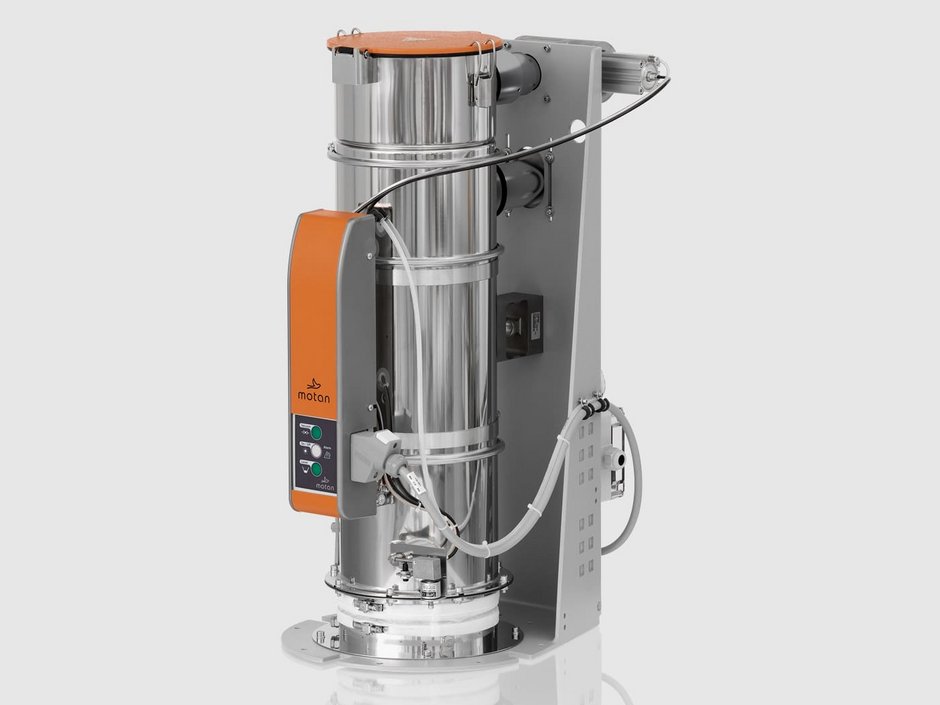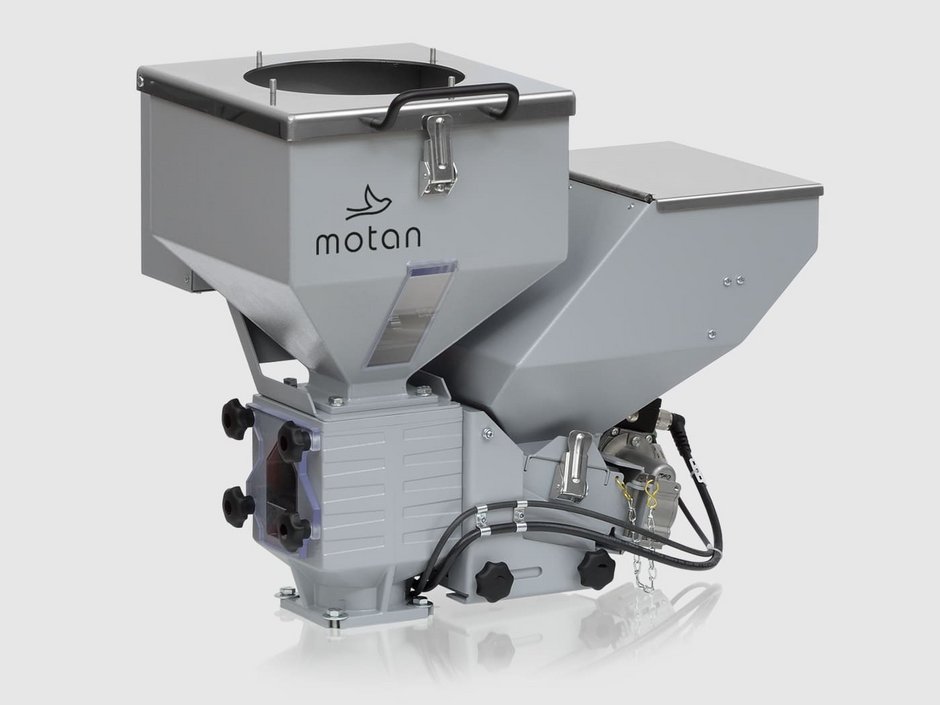OVERVIEW OF THE PROCESS
A very common process in the production of injection molded parts is the combining of a neutral plastic feedstock with different additives to adjust the performance or appearance of the finished product. There could be several reasons for doing this; to change the strength or flexibility of the finished part or to create parts with a specific color. In the case of producing a specific color, the operator will typically start with a base plastic and then add in a certain amount of the correct color to achieve a finished product with the desired hue. There are many ways to introduce color. For the sake of simplicity we will take an example from what is called the masterbatch process. In this process a neutral color is used as the base and it is dosed with a pre-determined amount of a colorant (the masterbatch) to give it the correct color. Typically a rotating screw is used to convey the material into the dosing hopper. The screw design is dependent on the physical shape and size of the particles being conveyed; granulate, pellets, powders, fibers or flakes are all used to either change the physical properties or appearance of the finished product. It is critical that there is enough clearance between the screw and the housing that material cannot jam up the screw resulting in errors in dosing and lost time in correcting the situation.

A SIMPLE RECIPE
The objective of a dosing system is to produce a controlled flow of accurately blended mixtures of plastic plus the additives needed to produce the desired physical properties. Though the raw plastic can be supplied in many forms, most commonly it would be uniform sized spherical pellets. Granules could also be supplied, although they are less uniform in size and shape and so would use a slightly different feed screw mechanism. In order to get the correct proportion we will take a look at an example of a simple two part mix for simplicity.
To achieve a successful result the proportions must be tightly controlled. For gravimetric dosing, that is, dosing on the basis of weight, the dosing chamber has a scale built in to measure the weight of the contents. However, the order of dispensing becomes important especially when the additive is a small percentage of the overall weight. As an example, suppose that 400 grams of base plastic with 40 grams of colorant gives us the desired color. One might expect to dispense 400 grams of base material first and then 40 grams of the colorant. However this doesn’t take into account potential weight measurement inaccuracies. If there is a potential overall error in weight measurement of 1.0 %, then the measurement could be off by 4.4 grams (1% of 440 total grams) and still be within specification. However if the error of 4.4 grams is due mostly to the colorant since it was the last addition to the chamber it represents a >10% error in the amount of colorant. In this situation a higher accuracy can be attained by making sure that the colorant should be measured first. This would result in only a 0.4 gram error in the colorant weight (assuming the same 1% error). Then adding in the base material will result in a more consistent result from batch to batch. Feeding the raw components for dosing in this way is known as asynchronous dosing. If both materials were added at the same time it is called synchronous dosing.

OPTIONS
Dosing is a matter of following a tried and true recipe. Just like baking a cake, the ingredients can have a variety of textures and densities. In order to handle the different types of additives, from liquids, to pastes, flakes, powders and fibers the appropriate conveying device must be chosen and calibrated accordingly using the appropriate measuring technique. A number of conveying mechanisms are based on a single or dual screw-type conveyor. The material to be mixed advances a certain amount with every turn of the screw allowing for measurement based on the screw rotation speed. Other conveying methods involve wheels, discs, pushers, vibration, or a feed tray, all depending on how the material can most easily be measured and controlled to achieve the desired result. For an asynchronous loading, once the ingredients are in the dosing unit a valve at the bottom opens and the contents are fed gravimetrically into a mixer. As its name implies the job of the mixer is to make sure that the dosed components are uniformly dispersed throughout. This whole system must be designed with enough volume to feed into the injection molder at the screw-back portion of the cycle. This periodic flow rate is synchronous with the loading stage of the injector and must have a volume flow rate that is higher than the average flow rate.
BALANCE IS THE KEY
Whether feeding an extruder or an injector, the objective is to have a flow rate that accommodates the demand of the production equipment. The focus, so far, has been on the dosing process, but the system designer must take into account the feed bins that are providing the raw source material to the dosing bin. Either asynchronous or synchronous dosing are used with the asynchronous method requiring a mixer. The challenge is to balance the flow rates that are feeding into the dosing stage so that the material is always available during operation, but which also have enough capacity to prevent overflowing during loading. When running properly, the raw ingredients flow regularly into the holding bins. This material, in turn, will cascade appropriate amounts of the material into the dosing stage. There must be enough time and agitation of the ingredients to generate a homogeneous mix by time the mixture is demanded by the production process. When properly set up and in balance, the ideal operation will run smoothly while requiring only periodic refills of the raw material bins.
